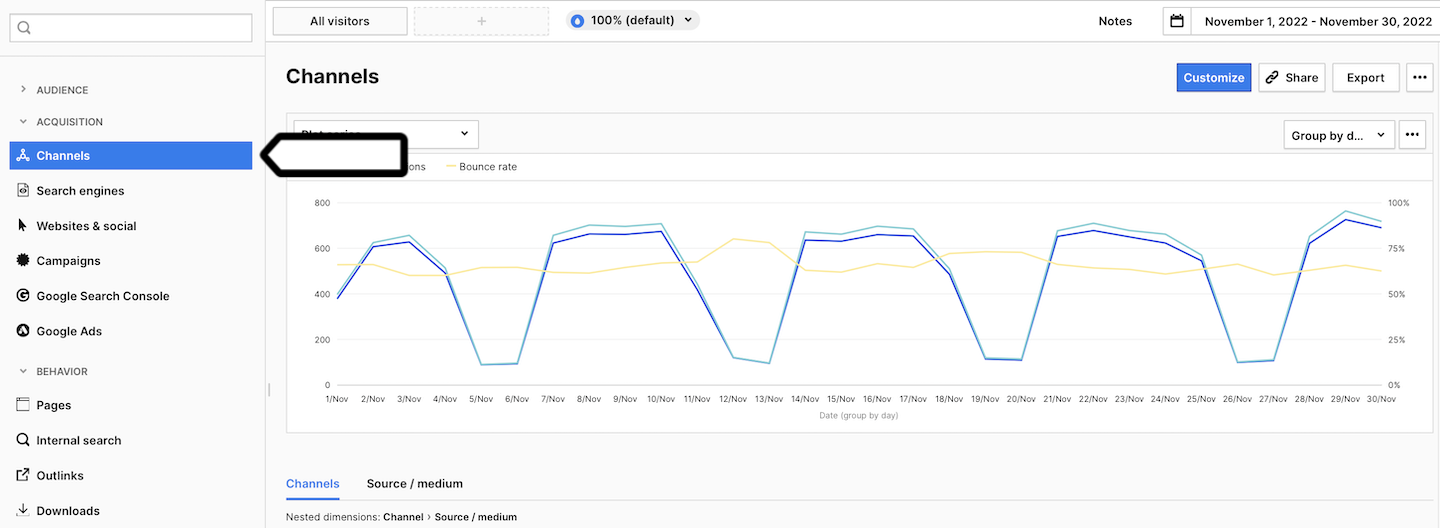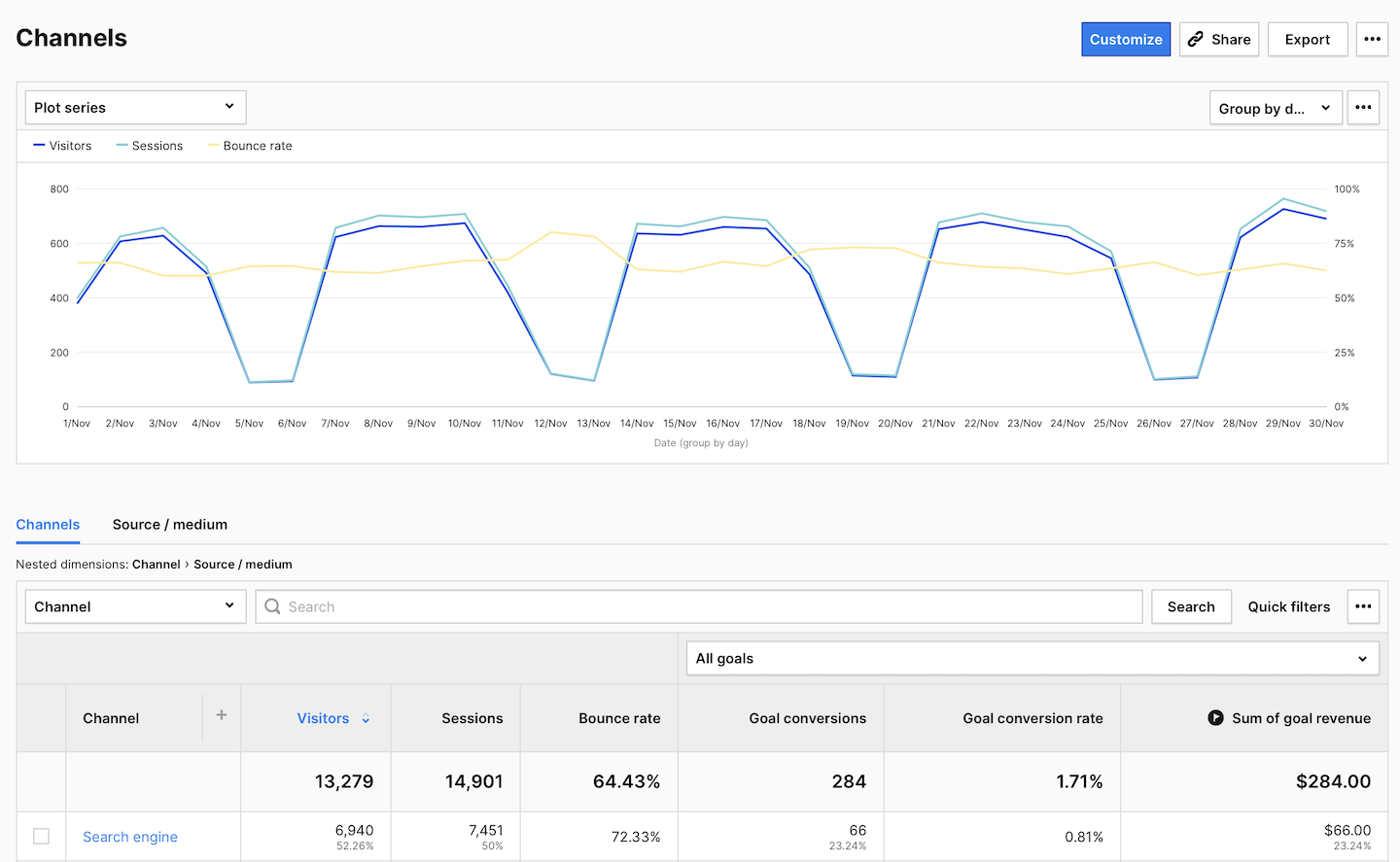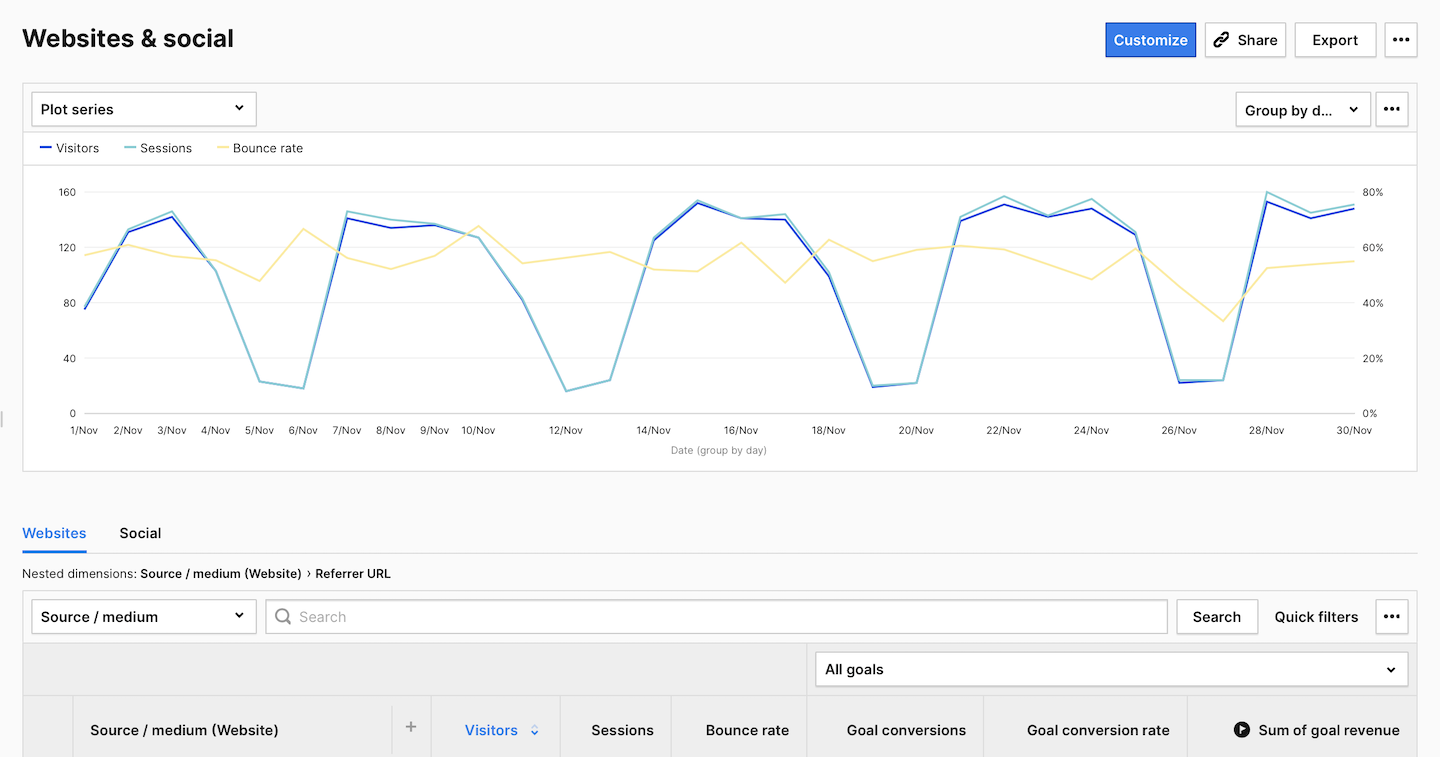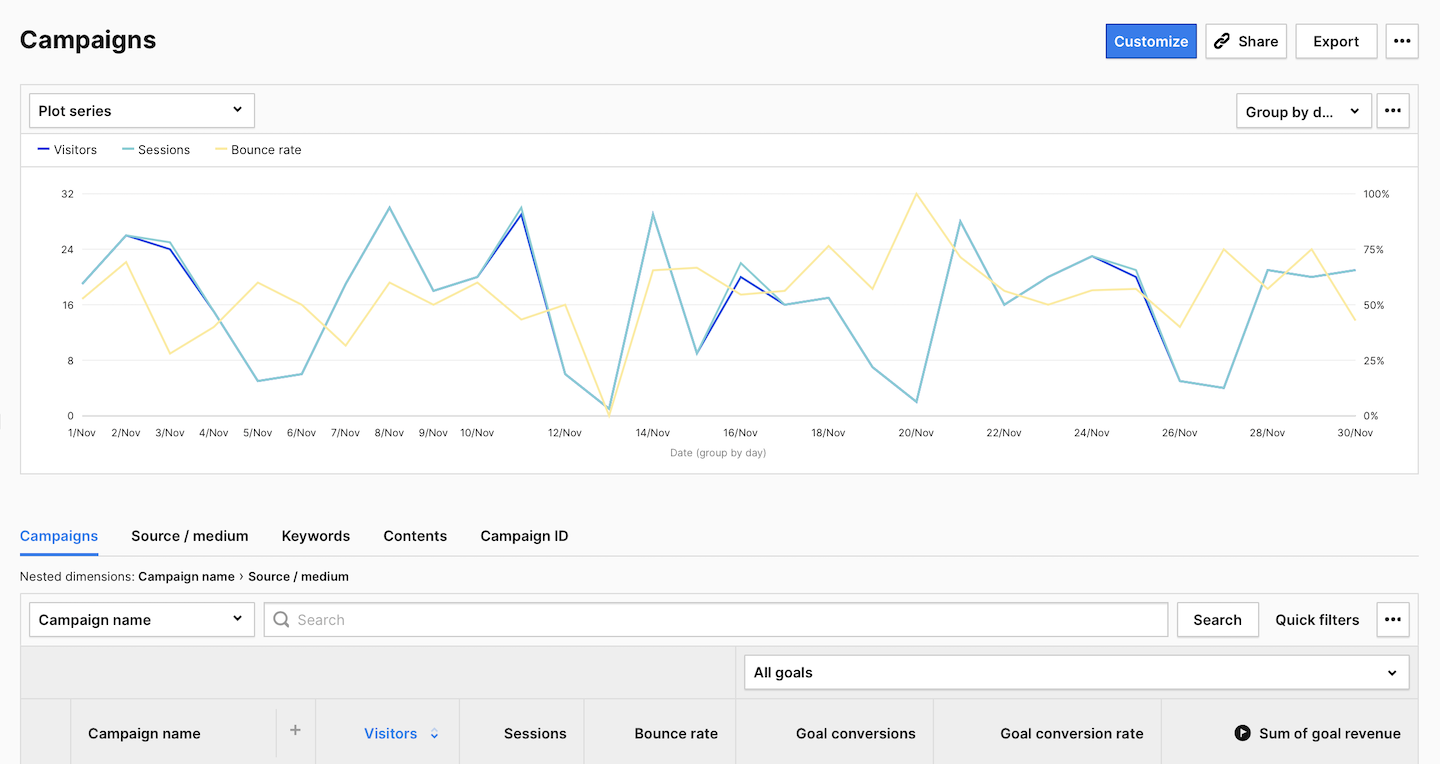Once you’ve learned about audience reports and know a few things about how people behave on your website, it’s time to find out where they come from.
The acquisition reports will point you to websites, campaigns, search engines and social media that bring people to your website. Looking at these reports you’ll know if your advertising is working okay, if you’re communicating well in social media, and if your company can be easily found in Google.
In the acquisition reports, there are five types of traffic sources:
1. Campaign: Visitors land on your site after clicking a link with added parameters: utm_*, pk_* , gclid or custom campaign parameters. Campaign traffic is a result of marketing campaigns like ads placed on other websites, email marketing, social media posts, search engine marketing (SEM). The success of the campaign can be measured by the number of visitors it drives to your site and the engagement and conversion rates of those visitors. See more about tagging campaigns.
Channel definition: source = value from the campaign source (pk_source, utm_source or a custom parameter), medium = value from the campaign medium (pk_medium, utm_medium or a custom parameter).
2. Direct entry: Visitors enter your site by directly typing its URL into their browser. This shows that they already know your site’s address, so the number of direct entries can be used as a measure of your brand awareness. When someone comes to your site through a direct entry, it’s a good sign that you’ve successfully made an impression on them and that they’re interested in what you have to offer.
Channel definition: source = direct, medium = direct
3. Search engine: Visitors come to your site after clicking a link in search engine like Google or Bing. Search engine traffic is a good way to gauge how visible your business is in search engines. Google is the most popular search engine, with a market share of over 90%. But there are many other search engines out there, like Bing, Yahoo, DuckDuckGo. We detect about 275 different search engines.
Channel definition: source = detected search engine name, medium = organic
4. Social: Visitors enter your site from social media platforms like Twitter, Facebook, YouTube. Social media can drive lots of new traffic to your site. When people share links to your site on social platforms, it can increase visibility and attract new visitors. Social media platforms grow in numbers, and we currently recognize about 75 different ones.
Channel definition: source = detected social network name, medium = referral
5. Website: Visitors come to your site after clicking a link on another site. For example, if you place a link to your site on medium.com and someone clicks on it, the traffic from that link will be recorded as website traffic from medium.com. Website traffic indicates that your content resonates with users on other sites. If you see that a particular site is sending a lot of referral traffic your way, focus on promoting your content there to increase your traffic even more.
Channel definition: source = referrer domain name, medium = referral
Note: If default channels are not enough for you, you can use custom channel grouping.
The acquisition reports group and organize referrers into a few reports.
To access the acquisition reports, follow these steps:
1. Go to Menu > Analytics.
2. Navigate to Reports.
3. On the left, click the report you want to work with.

First, we will look at the channel report.
Channel report
The channel report is a good observation point of all your traffic sources. The report will show you:
- Visitors: The number of unique visitors. Every visitor is counted once, even if they visit the website many times during the day. Read more
- Sessions: The number of sessions performed by visitors. A session starts with the first event and ends 30 minutes after the last event performed in that session. Read more
- Bounce rate: The percentage of sessions in which visitors only viewed one page and didn’t proceed to another page, goal conversion or order.
Bounce rate = Bounces / Sessions * 100%. Read more - Goal conversion rate: The percentage of sessions in which visitors completed a goal.
Goal conversion rate = Sessions with a completed goal / Sessions * 100%. (You need to set goals to collect this data.) - Sum of goal revenue: The amount of revenue generated by a goal. (You need to set goals to collect this data.)

By looking at the channel report you can easily see the ups and downs of your traffic and spot the sources that may be responsible for an increase or decrease in visits to your website. Knowing which channels are bringing people to your site you can think about investing money in campaigns, affiliates, bloggers, social media or search engine optimization.
If you have lots of direct entries, it means people know your brand and want to reach out to you. Lots of people coming from other websites indicate that your brand has plenty of sites recommending you. Many visitors coming from campaigns show that your campaigns are running and engaging people. And lots of people reaching you thanks to search engines indicate that your website is well described for the search algorithm.
However, if you see a high bounce rate for a channel you should be worried. It usually shows that people are disappointed. They saw an ad or search result, clicked on it, but where they got isn’t what they hoped for.
Other reports
In the acquisition reports, you will find four other reports: search engines, websites & social, campaigns, Google Ads and Google Search Console. Each of them will show you detailed information about each traffic source.
The search engine report gives details about search platforms used by people who reached your website. Most of your traffic will probably come from the Google search engine, as it’s the undefeated champion among search engines. If you click the source/medium in the report, you will see entry pages. With this information you’ll learn what content people look for in those search engines.

Tip: Most search engines don’t share the keywords that people use to find things online. However, Google Search Console gives you access to search queries. By integrating Piwik PRO with Google Search Console, you’ll be able to see these queries in Piwik PRO as well.
The websites & social report shows all websites and social media sites thanks to which people reached your website. It’s a mine of knowledge about websites that recommend your business, bloggers who talk about your product or service, news articles that mentioned your brand, or social media that spread the word about who you are.

The campaign report gathers data about online campaigns that you are running such as paid search, Google Ads, Facebook ads, newsletter and more. Yet, if you want to see this data in your reports, you need to track it using the Piwik PRO URL Builder or tag them manually. We will explain how to track campaigns in the future chapter. For now, you need to know that this type of report is available and you can use it once you set up a campaign.

